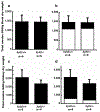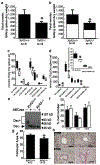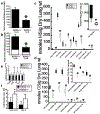Xylosyltransferase 2 deficiency and organ homeostasis
- PMID: 32965647
- PMCID: PMC9248025
- DOI: 10.1007/s10719-020-09945-9
Xylosyltransferase 2 deficiency and organ homeostasis
Abstract
In this paper we characterize the function of Xylosyltransferase 2 (XylT2) in different tissues to investigate the role XylT2 has in the proteoglycan (PG) biochemistry of multiple organs. The results show that in all organs examined there is a widespread and significant decrease in total XylT activity in Xylt2 knock out mice (Xylt2-/-). This decrease results in increased organ weight differences in lung, heart, and spleen. These findings, in addition to our previous findings of increased liver and kidney weight with loss of serum XylT activity, suggest systemic changes in organ function due to loss of XylT2 activity. The Xylt2-/- mice have splenomegaly due to enlargement of the red pulp area and enhanced pulmonary response to bacterial liposaccharide. Tissue glycosaminoglycan composition changes are also found. These results demonstrate a role of XylT2 activity in multiple organs and their PG content. Because the residual XylT activity in the Xylt2-/- is due to xylosyltransferase 1 (XylT1), these studies indicate that both XylT1 and XylT2 have important roles in PG biosynthesis and organ homeostasis.
Keywords: Disaccharide analyses; Extracellular matrix; Genetic modifier; Glycosaminoglycans; Glycotransferase; Organ homeostasis; Proteoglycans; Xylosyltransferase.
Conflict of interest statement
Figures





References
-
- Esko JD, Kimata K, and Lindahl U: Proteoglycans and Sulfated Glycosaminoglycans. In: Essentials of glycobiology. pp. xxix, 784 p. Cold Spring Harbor Laboratory Press, Cold Spring Harbor, N.Y. (2009) - PubMed
-
- Bernfield M, Gotte M, Park PW, Reizes O, Fitzgerald ML, Lincecum J, Zako M: Functions of cell surface heparan sulfate proteoglycans. Annu. Rev. Biochem 68, 729–777 (1999) - PubMed
-
- Esko JD, Selleck SB: Order out of chaos: assembly of ligand binding sites in heparan sulfate. Annu. Rev. Biochem 71, 435–471 (2002) - PubMed
-
- Gustafsson M, Boren J: Mechanism of lipoprotein retention by the extracellular matrix. Curr. Opin. Lipidol 15(5), 505–514 (2004) - PubMed
-
- Mahley RW, Ji ZS: Remnant lipoprotein metabolism: key pathways involving cell-surface heparan sulfate proteoglycans and apolipoprotein E. J. Lipid Res 40(1), 1–16 (1999) - PubMed
Publication types
MeSH terms
Substances
Grants and funding
LinkOut - more resources
Full Text Sources
Molecular Biology Databases

